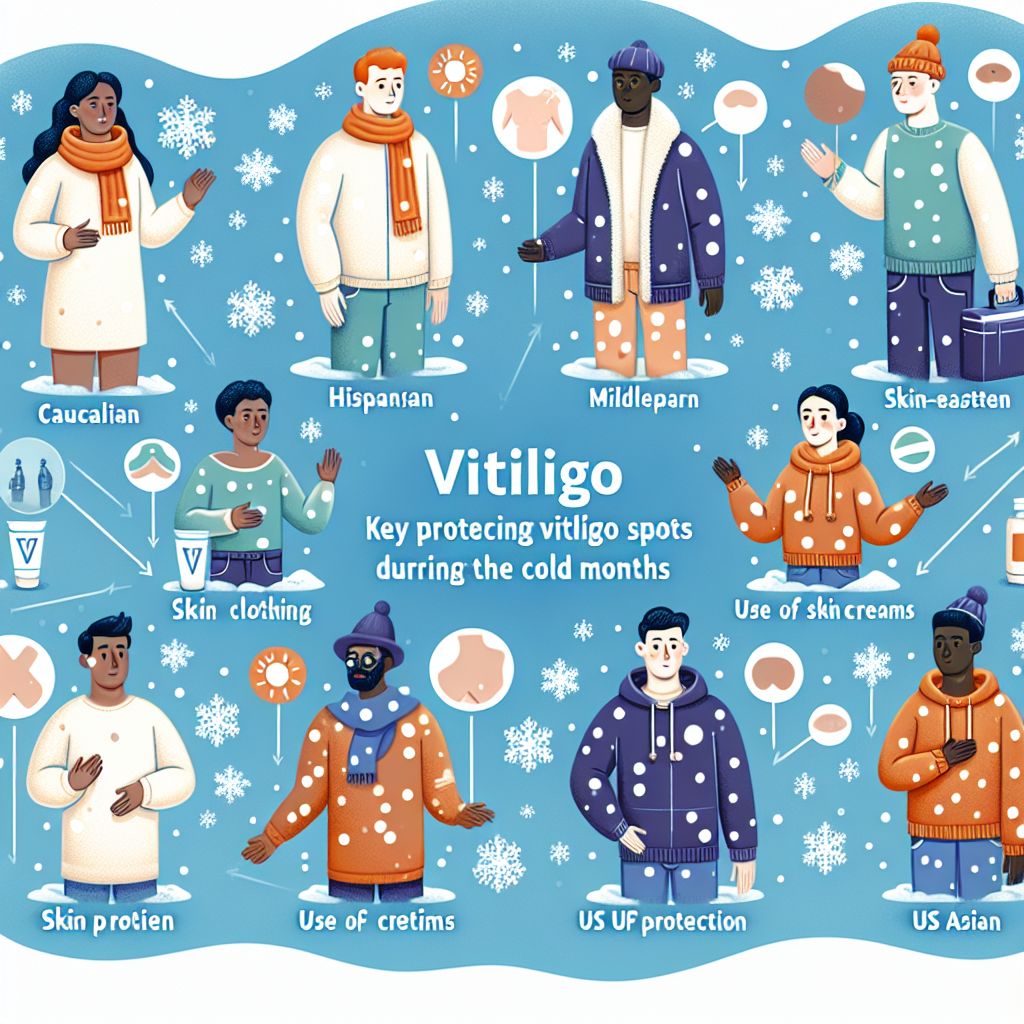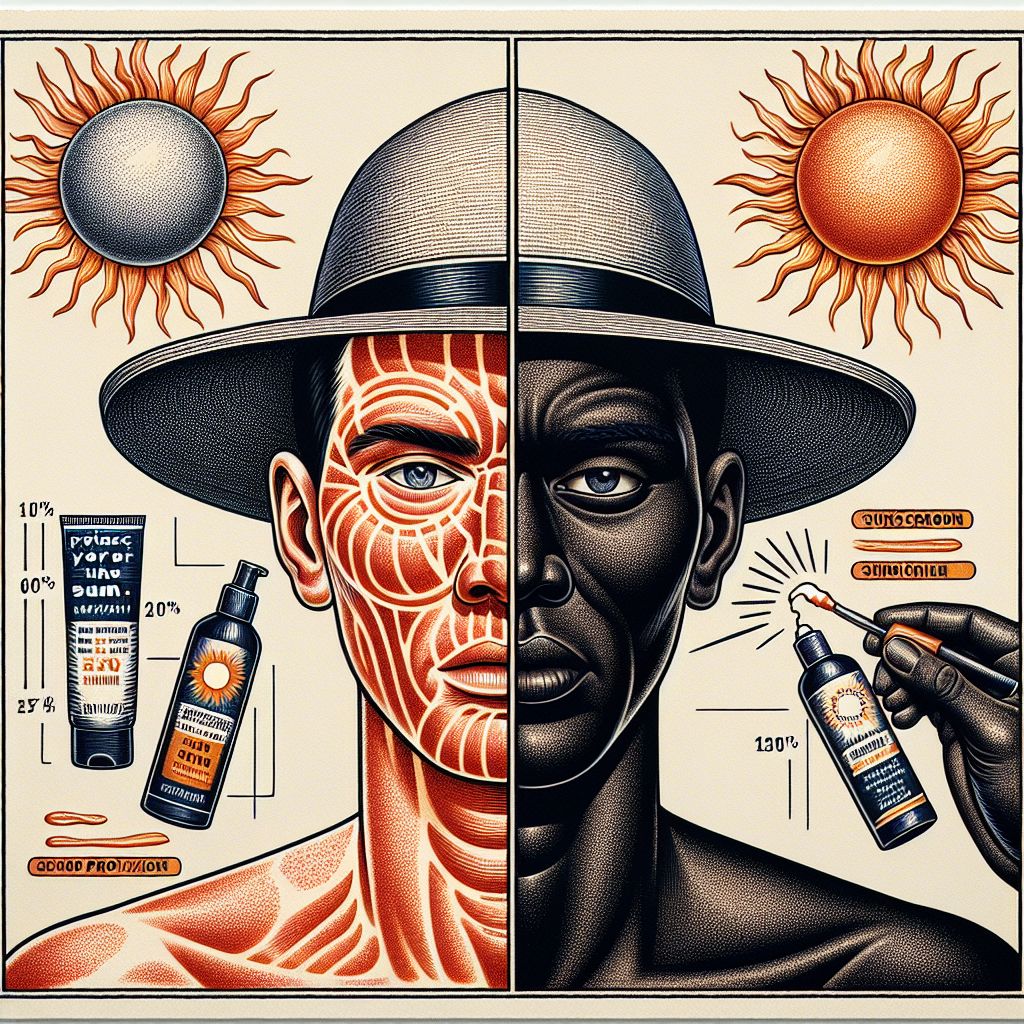
-
Hydrate regularly to prevent skin dryness exacerbated by cold weather.
-
Use gentle, fragrance-free moisturizers to protect vitiligo spots from harsh winter elements.
-
Incorporate a balanced diet rich in vitamins and minerals to support skin health.
-
Wear protective clothing to cover exposed skin during cold hydrotherapy sessions.
-
Seek professional advice if winter weather severely affects your vitiligo.
Why Vitiligo Spots Need Special Care in Winter
When the mercury drops, the air gets drier and your skin begs for extra attention. This is especially true for those with vitiligo, where the lack of melanin makes skin more vulnerable to the elements. Winter doesn’t have to be your skin’s enemy, though. With the right approach, you can keep your vitiligo spots well defended and your skin feeling supple, even during those chilly hydrotherapy workouts or brisk morning jogs.
The Impact of Cold Weather on Vitiligo
It’s a fact: winter can be tough on your skin. The cold air outside and the dry heat indoors strip moisture away, leaving your skin flaky and itchy. But when you have vitiligo, the stakes are even higher. The lack of pigment in your vitiligo spots means less natural protection against these harsh conditions, making your skin more susceptible to dryness and irritation.
Understanding Your Skin’s Winter Needs
Your skin is your largest organ and it’s smart. It knows when it’s not getting what it needs. In winter, it’s telling you loud and clear: “I’m thirsty and I need a shield!” That’s why hydrating and protecting your skin becomes top priority, particularly for those with vitiligo. And remember, this isn’t just about feeling good; it’s about keeping your skin healthy and resilient.
Key Strategies for Protecting Vitiligo Spots During Cold Months

Moisturizing: Your First Line of Defense
Moisturizing is your skin’s best friend, especially in winter. Here’s how you can keep your skin quenched and happy: consider exploring diabetes skin care hydrotherapy for additional support and protection.
-
Choose Wisely: Look for moisturizers that are fragrance-free and contain ingredients like glycerin, hyaluronic acid, and ceramides. These ingredients help lock in moisture and repair the skin barrier.
-
Timing is Everything: Apply moisturizer right after bathing or washing your hands. This helps trap the moisture your skin has just absorbed.
-
Go Thick: In winter, thicker creams and ointments may be more effective than lotions at preventing moisture loss.
Layering Up: Clothing Tips to Shield Your Skin
Just as you layer up to stay warm, you should also layer up to protect your skin. But it’s not just about piling on clothes. The fabrics you choose and how you wear them matter:
-
Soft Fabrics: Choose materials that are gentle on the skin, like cotton or silk, to wear directly against your vitiligo spots.
-
Avoid Irritants: Wool can be warm, but it’s also scratchy. If it irritates your skin, keep it away from direct contact with your vitiligo spots.
-
Stay Dry: If you’re sweating during a workout, moisture-wicking fabrics are your best bet. They’ll keep moisture away from your skin, reducing the risk of irritation.
These tips are your starting point for navigating the winter months with vitiligo. But there’s more to learn, so let’s keep going and dive deeper into how you can safeguard your skin during the cold season with Neutrogena Hydro Boost products.
But don’t just stop at the surface. Your skin needs hydration from the inside out. Drink plenty of water throughout the day to keep your cells plump and happy. And consider a humidifier in your home or office; it can add just enough moisture to the air to help your skin stay hydrated.
Staying Hydrated Inside Out
Hydration isn’t just about slathering on creams; it’s also about what you put into your body. Drinking plenty of water is a no-brainer, but did you know that eating foods high in water content can also help? Foods like cucumbers, oranges, and apples can contribute to your daily water intake, helping keep your skin and your vitiligo spots from drying out.
Navigating Chilly Hydrotherapy Sessions with Vitiligo
Hydrotherapy is a great way to exercise and relax, but the combination of cold water and chlorinated pools can be harsh on vitiligo spots. Here’s how to protect your skin:
-
Apply a thick layer of petroleum jelly or a waterproof barrier cream to vitiligo spots before entering the water.
-
Immediately after your session, rinse off in lukewarm, fresh water to remove any chlorine residue.
-
Pat your skin dry with a soft towel—rubbing can irritate your spots.
With these measures, you can enjoy the benefits of hydrotherapy without compromising your skin’s health.
Pre-Workout Skin Care Rituals
Before you jump into your hydrotherapy session or head out for a winter run, take a moment for some pre-workout skin care. Apply a protective ointment over your vitiligo spots to create a barrier against the cold and damp. Think of it as putting on your skin’s workout gear—it’s just as important as your sneakers!
Post-Workout Recovery for Your Spots
After your workout, it’s time for recovery, and that includes your skin. Gently cleanse your vitiligo spots to remove any sweat or environmental irritants. Then, reapply your moisturizer to lock in hydration and keep your skin protected until the next workout. It’s like giving your skin a well-deserved cool down.
The Importance of UV Protection and Safe Sun Exposure

Even in winter, UV rays can be strong, particularly if you’re around snow, which reflects sunlight. A little sun can be beneficial for vitiligo, but too much can damage your skin. So, how do you strike the right balance?
Finding the Balance: Sunlight and Vitiligo
Controlled sun exposure can help manage vitiligo by stimulating pigment production. Aim for short periods of sun exposure during the less intense morning or late afternoon hours. And, of course, protect your skin with a broad-spectrum sunscreen that’s gentle on your vitiligo spots.
Choosing the Right Sunscreen for Sensitive Spots
Not all sunscreens are created equal, especially when you have vitiligo. Look for sunscreens that are mineral-based with zinc oxide or titanium dioxide. These ingredients form a physical barrier to protect your skin without the irritation that chemical sunscreens can cause. Apply it liberally and often, especially after sweating or exposure to water.
When to Seek Professional Help for Winter Skin Care
Sometimes, despite your best efforts, you might need a little extra help. If you notice your vitiligo spots becoming irritated, itchy, or more pronounced, it might be time to consult a dermatologist. They can provide tailored advice and treatment options to help you manage your vitiligo through the winter and beyond.
Remember, taking care of your skin in winter is not just about aesthetics; it’s about your overall well-being. With these tips, you can face the cold with confidence, knowing that your vitiligo spots are as protected as possible. Embrace the season with skin that feels as good as it looks!
But don’t just stop at the surface. Your skin needs hydration from the inside out. Drink plenty of water throughout the day to keep your cells plump and happy. And consider a humidifier in your home or office; it can add just enough moisture to the air to help your skin stay hydrated.
Staying Hydrated Inside Out
Hydration isn’t just about slathering on creams; it’s also about what you put into your body. Drinking plenty of water is a no-brainer, but did you know that eating foods high in water content can also help? Foods like cucumbers, oranges, and apples can contribute to your daily water intake, helping keep your skin and your vitiligo spots from drying out.
Frequently Asked Questions
1. Can Winter Weather Cause Vitiligo Spots to Spread?
Winter weather itself doesn’t cause vitiligo spots to spread. However, dry and cracked skin can lead to inflammation, which may contribute to the progression of vitiligo. Therefore, keeping the skin moisturized and protected is crucial. For more information, review these vitiligo self-care tips from the American Academy of Dermatology.
2. Is It Possible to Repigment Vitiligo Spots in Winter?
Yes, it is possible. While the sun’s UV rays are weaker in winter, they can still stimulate pigment production. Phototherapy, a treatment using UV light, can be particularly effective and is often used in dermatology clinics year-round.
3. How Do I Adjust My Vitiligo Skincare When Traveling to Colder Climates?
When traveling to colder climates, increase your moisturizer’s thickness and apply it more frequently. Also, don’t forget to pack a broad-spectrum sunscreen and protective clothing to shield your skin from the elements.
4. Are There Any Special Considerations for Children with Vitiligo in Winter?
Children’s skin is more sensitive, so it’s essential to use gentle skincare products. Dress them in layers to keep them warm, and ensure they have a barrier cream on exposed vitiligo spots during outdoor play.



Leave a Reply